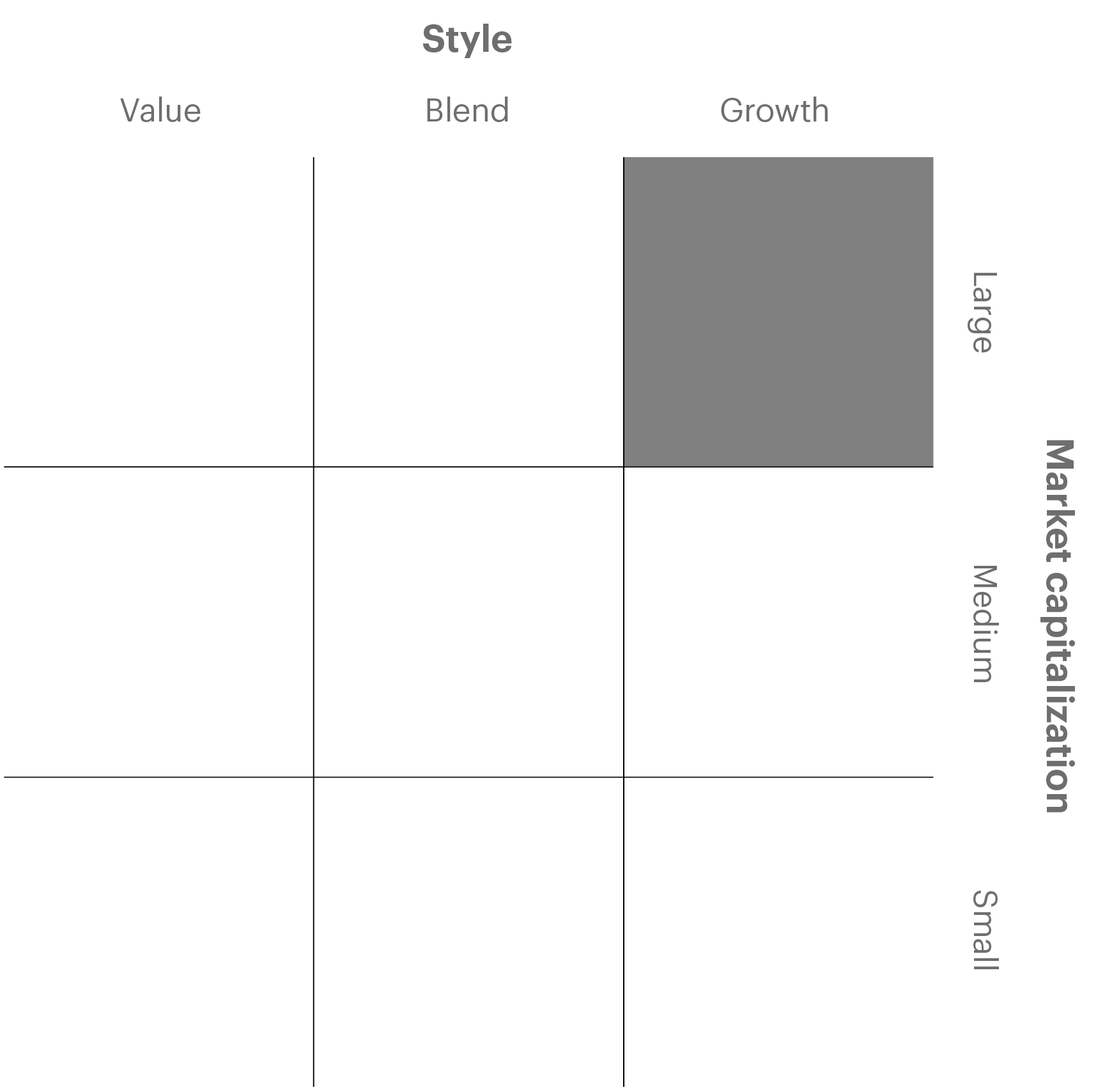Calendar year
Calendar year
(as of 12/31/2023)|
2023
|
2022
|
2021
|
2020
|
2019
|
2018
|
2017
|
2016
|
2015
|
2014
|
|
|---|---|---|---|---|---|---|---|---|---|---|
|
Fund
|
35.81
|
-34.39
|
18.09
|
34.76
|
36.91
|
1.88
|
33.76
|
-1.61
|
4.01
|
5.19
|
|
Benchmark
|
42.68
|
-29.14
|
27.60
|
38.49
|
36.39
|
-1.51
|
30.21
|
7.08
|
5.67
|
13.05
|
Average annual returns
Average annual returns
(as of 6/30/2024)|
1M
|
3M
|
YTD
|
1Y
|
3Y
|
5Y
|
10Y
|
Inception
|
|
|---|---|---|---|---|---|---|---|---|
|
Fund
|
4.15
|
1.52
|
12.60
|
23.96
|
2.92
|
11.73
|
12.09
|
9.76
|
|
Russell 1000® Growth Index
|
6.74
|
8.33
|
20.70
|
33.48
|
11.28
|
19.34
|
16.33
|
13.74
|
The ongoing charges/total expense ratio (TER) reflects annual total operating expenses for the class, excludes transaction costs and is expressed as a percentage of net asset value. The figure shown is from current KID. The investment manager has committed to reimburse the Sub-Fund when the ongoing charges exceed the agreed upon TER. Ongoing charges may vary over time.
Past performance is not indicative of future results. Performance calculations are net of all applicable fees and are calculated on an offer-to-bid basis (with income re-invested). Performance shown is for class and currency indicated and returns may increase/decrease as a result of currency fluctuations.
Returns do not reflect the imposition of the sales charge applicable to Class A shares. While the Fund does not currently impose a sales charge, the bank, sub-distributor or financial institution through whom you purchase shares may apply a sales charge up to 5.00%.
Please keep in mind that high double-digit returns were primarily achieved during favorable market conditions. You should not expect that such favorable returns can be consistently achieved. A fund's performance, especially for short time periods, should not be the sole factor in making your investment decision.
Cumulative
Cumulative
(as of 6/30/2024)This chart shows the value of a hypothetical $10,000 investment in the fund over the specified time period up to 10 years or since its inception (for funds lacking 10-year records). The result is compared with benchmarks, which may include a broad-based market index and a peer group average or index. Market indexes do not include expenses, which are deducted from fund returns as well as mutual fund averages and indexes.
Does not include sales charges and assumes reinvestment of dividends and capital gains. If sales charges were included, returns would be lower.
Performance and volatility metrics
Performance and volatility metrics
(as of 6/30/2024)| 3 Year | 5 Year | 10 Year | |
|---|---|---|---|
| Alpha | -7.43 | -5.78 | -30.30 |
| Beta | 0.97 | 0.95 | 0.96 |
| Sharpe Ratio | -0.01 | 0.47 | 0.62 |
| Standard Deviation | 21.23 | 20.20 | 17.05 |
| R2 | 0.92 | 0.93 | 0.92 |
| Information Ratio | -1.37 | -1.36 | -0.87 |
| Upside Market Capture Ratio | 73.01 | 67.57 | 70.15 |
| Downside Market Capture Ratio | 102.84 | 100.15 | 100.78 |
| Tracking Error | 6.09 | 5.58 | 4.88 |
| Correlation | 0.96 | 0.96 | 0.96 |
| Treynor Ratio | 0.00 | 0.10 | 0.11 |
Morningstar ratings and rankings
Morningstar ratings and rankings
(as of 6/30/2024)For illustrative purposes only. Ratings and awards are not an indication, promise, or guarantee of future performance. Ratings and awards should not be relied upon when making an investment decision. The Overall Morningstar Rating™ is a weighted average of the 3-, 5-, and 10-year (if applicable) ratings and is based on risk-adjusted return. Past performance is no guarantee of future results.
The Morningstar absolute ranking is based on the fund’s total return rank relative to all funds that have the same category for the same time period. Morningstar rankings do not include the effect of sales charges. Past performance is no guarantee of future results.




